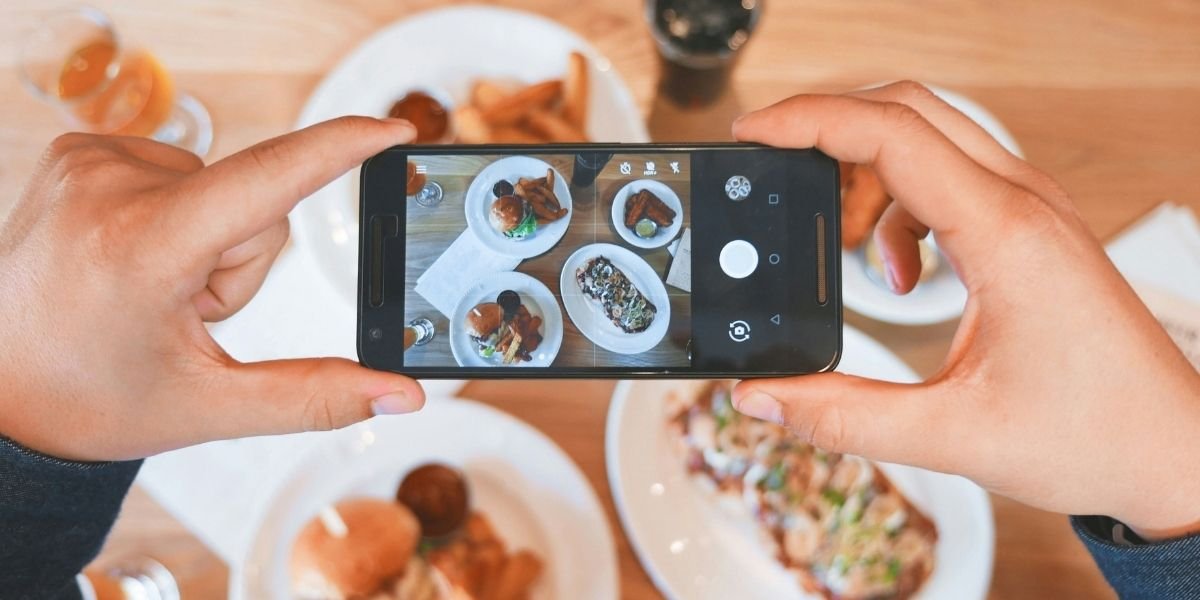Food influencers have taken social media by storm, transforming how people engage with food. Their popularity continues to rise, shaping food trends, influencing restaurant menus, and even changing consumer buying habits. But why exactly are food influencers so popular, and what impact do they have on the broader food industry? Let’s dive into the reasons behind their success.
Read also: How Social Media Has Influenced Retail Sales
What Makes Food Influencers So Appealing?
Food influencers are known for their ability to captivate audiences with visually stunning content and engaging personalities. One of the primary reasons for their popularity is the inherent appeal of food itself. Food is something everyone connects with, it’s a universal experience. The way food influencers present dishes, from close-up shots of mouthwatering meals to engaging cooking tutorials, naturally draws people in. Their content provides a satisfying visual experience, often evoking feelings of hunger, curiosity, or nostalgia.
Moreover, the rise of social media platforms has made it easier than ever to share food-related content. These platforms cater to quick, visually engaging videos, perfect for food content. Whether it’s a recipe demonstration, a food challenge, or a simple meal review, food influencers are able to connect with their audience in an intimate, relatable way. Their posts are often entertaining and easy to digest (pun intended), making them incredibly shareable.
How Do Food Influencers Build Trust with Their Audiences?

Photo Credit: Unsplash.com
One of the key reasons food influencers have become so successful is their ability to build trust with their audiences. Unlike traditional celebrity chefs, many food influencers don’t come from formal culinary backgrounds. Instead, they connect with their followers by sharing genuine experiences, offering practical cooking tips, or simply indulging in food-related conversations. This authenticity helps food influencers create a personal connection with their followers, making them appear more approachable and relatable.
People are naturally drawn to content that feels honest and unpolished. Food influencers often share their cooking failures, experiments with new recipes, or even behind-the-scenes moments. This transparency builds a sense of trust, and followers are more likely to engage with their content and return for more. Additionally, food influencers rarely come off as overly promotional or sales-driven. Their recommendations feel like personal advice from a friend, whether it’s a restaurant review or a product recommendation.
What Role Do Food Influencers Play in Shaping Food Trends?
Food influencers have become powerful trendsetters, and their reach extends beyond just food enthusiasts. They can make or break food trends, with their posts influencing everything from menu items to food products. Take the rise of plant-based eating, for example. Many food influencers have played a significant role in promoting vegan and vegetarian diets, leading to an increase in plant-based options in restaurants and supermarkets.
Similarly, food influencers are instrumental in pushing specific ingredients or cooking styles into the mainstream. Whether it’s a superfood like avocado or a trendy cooking method like air-frying, food influencers have a knack for spotting emerging trends early and amplifying them. This trend-setting power doesn’t just impact consumers; it also shapes the strategies of food brands, restaurants, and retailers who see the value in aligning their offerings with the latest food trends.
How Do Food Influencers Influence Consumer Behavior?
The influence of food influencers goes beyond trends, they directly impact consumer behavior. For example, when food influencers rave about a particular dish or restaurant, they can drive traffic to that place or encourage people to purchase specific products. Their ability to spark cravings and curiosity through visual content makes it easy for followers to decide to try a new recipe or visit a particular restaurant.
People trust the opinions of those they follow, and food influencers are no exception. A glowing review or an enticing food post can quickly lead to a spike in interest. This has led to a more dynamic relationship between food influencers and food brands. As food companies recognize the power of these influencers, collaborations have become more common. Sponsored content and partnerships are frequent, as food brands seek to capitalize on the influencer’s reach and their ability to sway purchasing decisions.
How Are Social Media Platforms Helping Food Influencers Thrive?
Social media platforms have been crucial in the rise of food influencers. These platforms allow for the easy sharing of food-related content that can be instantly consumed and shared. The visual nature of food lends itself perfectly to these platforms, where engaging imagery or videos can attract significant attention.
Instagram, for example, is built on stunning visuals, and food fits seamlessly into this format. Whether it’s a beautifully plated dish or a quick recipe tutorial, food posts tend to get a lot of engagement. TikTok, on the other hand, allows for quick, snappy content that works well with food trends. Influencers can showcase recipes, share cooking hacks, or take part in viral food challenges, all while capturing the attention of millions. YouTube also remains a go-to platform for longer cooking videos, product reviews, or in-depth restaurant explorations.
These platforms make it easier for food influencers to reach a global audience, turning them into household names in the food world. Their ability to consistently create engaging and shareable content helps them grow their followings and maintain their relevance in a highly competitive space.
Read also: Elevate Your Presence: Strategies for Making Your Social Media Influencer Brand Stand Out in Chicago
What Does the Future Hold for Food Influencers?

Photo Credit: Unsplash.com
Looking ahead, it’s clear that food influencers aren’t going away anytime soon. In fact, their popularity is likely to continue growing as they adapt to changing trends and platforms. With new social media platforms emerging and food-related content becoming more diverse, food influencers will continue to play an important role in shaping how people think about food. From promoting sustainable eating habits to continuing to push culinary boundaries, food influencers are set to remain at the forefront of the food conversation.
As consumer behavior shifts toward seeking out authentic, relatable content, food influencers are well-positioned to lead the charge. The ability to inspire, entertain, and educate their followers has given them a lasting influence on the food industry and beyond.
Food influencers are popular for their ability to combine creativity, authenticity, and trendsetting power to shape how people consume food. Whether they’re introducing new ingredients, showcasing unique recipes, or reviewing restaurants, their impact on food culture and consumer behavior is undeniable. As social media continues to evolve, food influencers will remain at the heart of the conversation, influencing everything from food trends to purchasing decisions.








